"Third Half": New Horizons – African contemporary art and postcolonial politics
In the moment of writing, I am visiting South Africa. It is a mere two weeks ago since African nationals and refugees; women, men and children where violently chased away from their shelters in the South African townships, some brutally murdered. In the midst of the politically sanctioned revival of an African Renaissance set out to enable African nation states to reintegrate themselves in the world as active agents and with this a new era of celebrating African cultural heritage, the sudden rupture of xenophobic attacks reflects the effects of the troubled legacy of colonialism and apartheid on the present. Communities remain deeply divided and race, gender and class based inequalities continue to haunt the every day experience for the majority. Across the world, the complex intersection between class, gender, race, religion, ideology, labor and commodity, are part of the “human condition” in which we actively live our lives, and their corollary of violence and xenophobia are today the legacies of our fraught modernity1. Post-independence Africa is a space of ambivalence, where the aspirations of her people are, ever so often, opposed by her own leaders and by influences from the outside. Her wealth is largely crippled by the West’s use of financial control to make the continents resources available to its own ends. And in recent years, China’s rapidly intensifying economic influence in Africa has become yet another reminder of a new global actor that feeds on globalization and the resultant economic and political expansion, and who has not shied away from reaching out its tentacles to areas troubled by conflict and weak governance. In this conflicting terrain, we must carry with us the words of Walter Benjamin: “The tradition of the oppressed teaches us that the “state of emergency” in which we live is not an exception but a rule.”2
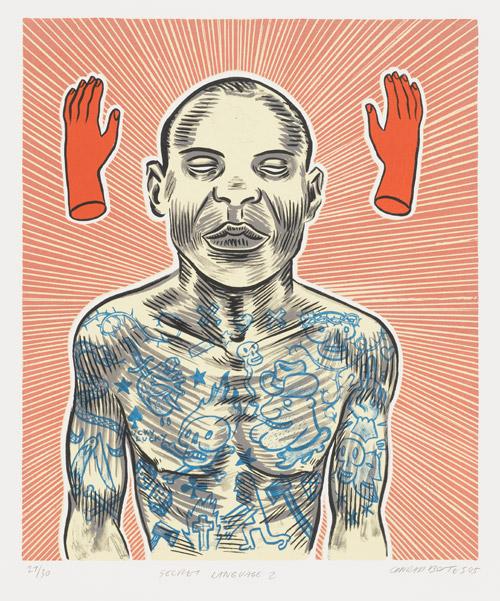 Conrad Botes
Conrad Botes
As history and present unfold entangled and disjunctively, the proposition to take farewell of postcolonialism is a call to reshape our critical and analytical tools in order to account for the changing and conflicting realities of our contemporary postcolonial constellation, where people negotiate their existence in world of incoherence, instability and discontinuity. Africa is a continent in the making – in constant transition and development. In recent times, the proliferation of biennales in Dakar, Cape Town, Luanda and Cairo have all contributed to the establishment of new networks and cultural infrastructure between artists, curators and art historians practising on the continent. New energy and activities are developing in areas far removed from the established art circuits along with the foundation of new artists spaces and nonestablishment projects, workshops and interventions. Here, African cultural productivity is flowering; literature, dance, music, theatre, fine art and oral narratives are expressed in ever new and imaginative ways. In Western discourses of modernism, the notion of authenticity and cultural purity have long haunted the reception and appreciation of artworks from the African continent. Unsupported by the multiplicity of identities developed through colonialism, globalization, postcolonialism and migration, the notion of authenticity is based on a stereotype, in search of reflections of the continuities of an unspoilt cultural past and African uniqueness3. Since the inception of the postcolonial critique, the primitivist framing has been largely replaced by notions of multiple identities that have extended the discourse on African art beyond the borders of the continent into the multiple experiences of the African diasporic community. Taking into consideration the large movements of people within and beyond the continent; from rural to urban areas, from national to postnational and transnational; postcolonial thinking has introduced in our theoretical vocabulary concepts such as hybridity, in‐betweeness, creolization, subalternity, the counter-hegemonic and the indeterminate, in order to account for our changing reality and to critique the inheritance of eurocentricity and Western epistemological and ontological hegemony.
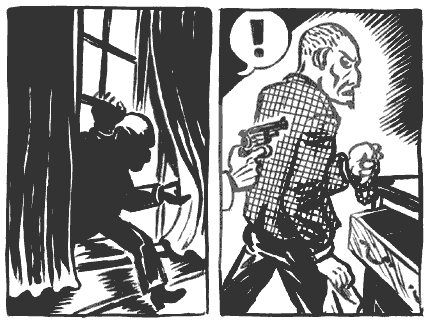 Conrad Botes
Conrad Botes
Firmly questioning the myth of a unified African subjectivity and the ‘fiction of authenticity so deeply embedded in colonial discourse, these re-routings have contributed to unsettle allegiances and open up for a re-consideration of commonly held notions of ethnicity, identity and origin. However, far from being fixed into an immutable regime of difference, the ideological and epistemological forces that shape the oppressive discourses of stereotype, myth and otherness have changed over time, space, and discursive systems. The persistence of the view of the “other” as a voiceless, timeless and passive object of investigation, predetermined, a priori, by discourse, rather than a subject of speech and self constitution, remains with us today as the consequence of the West’s discursive framing of its “others”4. While the lived experience of hybridity, movement, dislocation and exile have been important and productive motifs in cultural discourse and curatorial knowledge in the twentieth century, we are at the risk of slipping into what Sarat Maharaj has called “the spectacle of discourse”. As of lately we have seen the remarkable effect of the framing of African artists in a new form of alterity – that of the “postcolonial artist” – a figure embodied by the cosmopolitan African immigrant artist, lodged within a Western context, whose identity is in constant transition, restless and interrogative. Consequently we are witnessing a growing split between representations of the diasporic and the home-bound experience, between mobility and immobility, where artists practicing in the continent and who remain confined to local conditions and scarce resources and whose opportunities of reaching beyond the boarders are minimal, are at the loosing end of representation. For artists, many deeply embedded in local contexts and engaged in the social, political and economical challenges of the localities they inhabit; it remains pressuring to subvert a hegemonic and restrictive situation, both locally and globally. In striving towards a dynamic and enriching plurality, artists are struggling to resist assimilation and to be robbed off their voices, not only by the mainstream, but also by the new postcolonial/postmodern non-mainstream establishment5.
Consequently it remains a challenge to consider again how to fully engage with the plural present and interpret and exhibit cultural production from different corners of the world without reducing it to the politics of identity and history that further subjects it to the demands of curatorial prescriptiveness and cultural theory6. This calls again for a need to ask ourselves how we can begin to fully embrace the formal and conceptual merits of cultural difference in artistic practise and to develop new knowledge around the complex dynamics between local and global cultural production. As such this moment of farewell calls upon us to reinvigorate the theoretical and conceptual strategies used to understand and critique our present and its relationship to artistic production and curatorial knowledge. In engaging with what Irit Rogoff calls an ‘embodied criticality7 based on an understanding and recognition of our own embededness in and complicity with the very conditions we are seeking to critique, my wish is to bring back to attention the formation of the viewing gaze. It is how we look “elsewhere” – the epistemological place from where we see and find knowledge, which is the most important subject of enquiry that I hope the 3rd Guangzhou Triennial will enable us to explore. To this end, the intention is not necessarily to find answers to the questions we as curators, along with the artists, pose but to access different modes of inhabitation from which we can turn our perceptions inside out and see other locations and modernities as productive spaces for critical and artistic production/interrogation.
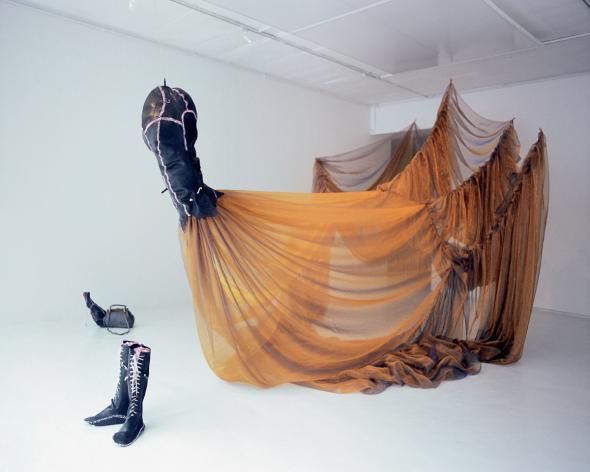 Nicholas Hlobo, Unongayindoda (One Who Almost Looks Like a Woman), 2005-2006, 260 x 600 x 330 cm, courtesy of Alexander Rhomberg Collection, Austria and Michael Stevenson Gallery, Cape Town.
Nicholas Hlobo, Unongayindoda (One Who Almost Looks Like a Woman), 2005-2006, 260 x 600 x 330 cm, courtesy of Alexander Rhomberg Collection, Austria and Michael Stevenson Gallery, Cape Town.
Rather than inserting the artists and their artworks as illustrations of these discussions, I have proposed artists who seek to reinvent questions of culture and agency in this age of global dynamism. By posing astute questions, the artists seek to map new cartographies of our contemporary world and present new visions of the future to come. While their work embraces the formal aesthetical challenges of contemporary art, their investigations are in the field of the cultural, philosophical, ideological, social and political questions of our time. In engaging with artists who have developed a profound critical sensibility in a refusal to fit into neatly packaged categories and politics, there is no clear consensus or necessarily a similarity in theme between the artistic positions. There is also no counter manifesto being hauled here; rather the artists in the exhibition engage with a multiplicity of perspectives that keep both disharmonies, tensions and contradictions between them in play. What keeps the selection together is in an engagement with notions of translation, desire, fiction, fantasy, simulacra, utopia, and in forming new routes of entanglements in a global system of circulation and exchanges of ideas, visions and political and ideological influences. In engaging with voices and subject positions that speak of both localized difference and internationalism, the artists in the exhibition enable us to further re-think the aesthetic and conceptual criteria, from which we today understand, remember and appreciate art.
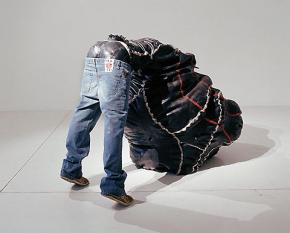 Nicholas Hlobo
Nicholas Hlobo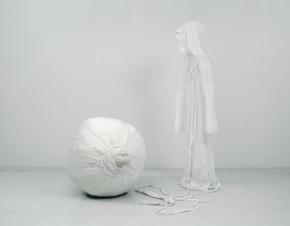 Nicholas Hlobo, 2007. Courtesy Sindika Dokolo Collection, Luanda, Angola.
Nicholas Hlobo, 2007. Courtesy Sindika Dokolo Collection, Luanda, Angola.
Africa – an invention so overdetermined and fraught, not only as a signifier of absolute difference and otherness, but also in the many ways the continent has come to epitomize the impenetrable, the speechless, the dismal and the inhuman. Subsequently locating African artists in a double bind of either being absorbed in the Western gaze as examples of a postmodern multiculturalist euphoria that have turned towards a celebration of commodified alterity or to risk being disavowed as what Donna Haraway calls the anomalic monstrosity of the “inappropriated other”8, when claiming identities that subvert ethnic or racial expectations that are problematic and burdensome. In attaining to the failure of intelligibility and communicability of African artists and intellectuals in acquiring the tools and power of constituting a speech that articulates an autonomous voice; writers and critics of contemporary African art have turned towards the politics of the subject and stated its crisis.9 How do African artists develop a ‘being in the world when projections of what this being may entail, are so deeply polluted, confused, distorted and opposed, both from the inherited remains of colonialism as well as from a normative Western gaze that feeds on its supposed difference? How do African artists shape a vision that disrupts the structuring gaze and define a self, a subjectivity, a singular plural being-in-the-world of contemporary African life? Taking these questions to task, South African artist and scholar Thembinkosi Goniwe’s project Dialogical Encounter is based on online dialogues with artists, curators and intellectuals in Africa and beyond. Tapping into the vibrant artistic and intellectual debates that spring from the profound diversity of local art practises, Goniwe’s project inserts itself in the interface between art and activism. Where postcolonialism was initially driven by an ethics based on the desire to hear the “other” speak, Goniwe returns to this ethical position by ways of actualizing the dialogical relationship as a model for civic conversations, across real and imagined borders and boundaries. In the footstep of Achille Mbembe’s significant question as to how to write the world from Africa and how to write Africa into the world,10 the development of new discourse on the profound complexities of African particularities as well as its “worldliness” are the starting points for investigation. In initiating a platform from which African critics, curators and artists can speak and partake in global discourses and where new forms of agency and subjectivity can be articulated, Dialogical Encounter seeks to contribute to the formation of a new ethics in global relations. Underlying the project is asking about the relevance of postcolonial practices and discourses and its pronounced farewell; what have happened to the politics of activisms for freedom, democracy, peace and reconciliation at the time of rapidly accelerating capitalist globalisation? What are we supposed to make of the implications of speed and politics that underpin mobility of different subjects in the cosmopolitan settings? What economies or agencies do visual arts has in dealing with the rapid pace of changing things social, political and economical in societies under the stress of inter-nationalism and trans-nationalisms?11
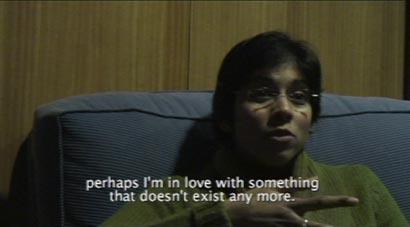 Fata Morgana (My Africa), 2006, de Cláudia Cristóvão
Fata Morgana (My Africa), 2006, de Cláudia Cristóvão
In moving away from idealising the space of postcolonial migration and multiculturalism as the privileged site of hybridity and recognising that all cultural formations and identities are equally fragmented as the migrating ones, South African artist Nicholas Hlobo inserts his artistic practice in the intersection between local and global culture, between tradition and modernity and in the complex formations of identity in the space of postcolonial ambivalence. Playing with the innuendo of Xhosa language and its rich mythology of proverbs and metaphors, Hlobo engages with issues of gender, sexuality, identity and political and cultural heritage. Growing up as a young gay man in South Africa, where homosexuality in the black communities are often viewed with discomfort and suspicion, seen by many as a sickness brought to Africa by the Europeans, Hlobo’s performances and intricate sculptures made out of found materials such as rubber inner tubing, ribbon, soap and silicon, portray a heteronormative construction of masculinity in crisis. Seeing this crisis as a productive space where new identities can be negotiated, Hlobo’s practise reflexively engages notions of gender and sexuality in the past and present in order to lay path for more accepting future. Concerned with the implications of the failure to confront issues of sexuality – whether that is AIDS or homosexuality – within the South African black community, Hlobo subsequently questions values and cultural stereotypes that have become accepted as norms. In many ways, Hlobo’s installations are mind games, sometimes difficult to decipher for an outsider with little insight into Xhosa language and culture. Yet, this is also where the power of his work lies; in the intricate web of meanings and subtle allusions that speak of localized differences and in the idle chat between members of his community and beyond. Here notions of solidarity, ritual, shelter, pleasure and imagination are important traits, which effectively bring us away from Afro-pessimism as a source of aesthetics into the dynamic ways identity and culture are reinvented in the making of the everyday. In revealing the many ways culture appropriate, loan and exchange ideas and influences from other cultures and through the colonial encounter, Hlobo proposes for the African subject an agency that both celebrates and questions the histories and traditions that have shaped perceptions of masculinity and sexual identity.
Due to large movements of refugees, displaced and stateless people across the world, Edward Said has referred to our contemporary world as characterized by of “a generalized condition of homelessness”12. In this state of transition, notions of place and identity can no longer be seen as naturally given, but demands to be read as always and already hierarchically interconnected. In engaging with memory as a site for the production of identity and belonging in postcolonial societies, artist Cláudia Cristóvão is one of few Portuguese artists who has had the courage to assume her relationship with Africa in ways that not only effectively challenge the assumption of linking belonging to a specific place or territory, but also reveal identity as linked to modes of recognition, to a political ethics and imagination. In the project La Voyage Imaginaire, Cristóvão engages with the personal narrative of Auri, of man mixed Angolan and Portuguese heritage and a contemporary product of the great expatriation movements that through the late 20th century re-shaped the map of the world. Divided between the movie-like memories he has been retold and the possibility to “enter the movie” and change its ending, this is the imaginary journey of a man with no fixed point of departure or arrival. In re-actualizing Portugal’s colonial past, Cristóvão refutes the historical erasure of the colonial encounter in Portuguese culture. In an engagement with personal narratives that are unique, yet general for a wider experience of a life of contradiction in the shadows of colonialism, Cristóvão tells us a story that in a way contextualizes her own life – the life of a Portuguese woman born from the colonial encounter in Angola.
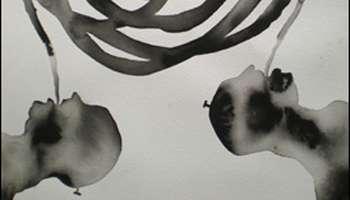 Barthélémy Toguo
Barthélémy Toguo
Refusing to be cast in an either/or dichotomy between colonizer and colonized, Cristóvão’s work reveals that both “self” and “other” are deeply intertwined and that those presumably “other” stories, are in fact the story of Portugal, of Europe in the modern, postcolonial world. The story of Europe is one of exile and migration, of cross-cultural exchange, uprootedness, creolité and opposition, intervention, desire and assimilation. The crisis in representation of the European subject is consequently in the failure to reshape its outdated modernist master narratives of homogeneity and exclusion13. Also navigating his existence in this space of ambivalence, Cameroonian/Parisian artist Barthélémy Toguo strategically use wit and playfulness juxtaposed with provocative representations of an often cruel reality of our contemporary postcolonial constellation. Inserting himself as a diasporic agent in a world of contradiction, complicity and complexity, Toguo interrogates the postcolonial political and psychic economy of the globalized present and its effect on the human condition. In his installation Lawless Zones 2, Toguo renders the effects of colonialism in our contemporary society as one of violence and ultimately death. The lifeless bodies in his sculptural installation are a harsh reminder of the brutalizing forces of colonial subjugation and domination, but the death of the subject can also be read in metaphorical terms; as one of alienation and loss. Ultimately, the installation reminds us that the birth and emergence of European modernity was one of conquest and erasure, a scarring in the tissue that remains in our life as a script in need of resurrection. As such the complex folding of different temporalities, of past and present and their disjunctive entanglements may indicate a way forward, beyond postcolonialism. Seeing the crisis of the modern subject as a productive space where new, more complex subject positions can be adopted, Toguo counter the stigmatizing discourses of “othering” and refute simplistic master/slave and oppressor/victim dialectic – as on all sides of the boarders lay the dead bodies in the Lawless Zones. In rendering visibl the “invisible” presence of the survivors in a contemporary landscape of anguish, fear, poverty and anxiety, Nigerian artist Dilomprizulike – the junkman from Africa – turns his attention to the working class poor of urban African cosmopolitanism. In his sculptural installation The Last Flight, Dilomprizulike stages the desiring contemporary body and subject. Using found materials and junk picked up from the streets as building stones for sculptural forms – of people with dreams, hope, fears and desires ‐ he brings new life into what has been rejected as unwanted by society. Shedding light on life in the “margins”, The Last Flight is a critical reminder of the uneven edge of modernity and the challenges we face for the dignity of life to be restored where suffering still remains.
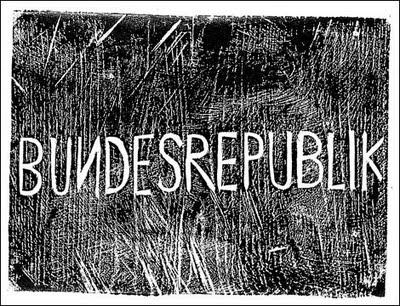 Barthélémy Toguo
Barthélémy Toguo
In enacting the revolutionary sprit of the 1960s political optimism, Allan deSouza and Yong Soon Min’s installation Springtimes of John and Yoko: Bed-Inn (2008) engages with notions of simulacra and desire in a playful yet critical commentary of our consumer society and the fatigue in political courage and transformation. Here, the mass mediated revolution is channelled to the audience as they lay passively in bed as consumers of simulated stimuli in the form of an amalgamation between pornography, politics and Chinese fortune cookie sayings. As such the viewer is drawn into the work of art; seduced, amused and relieved by the urgency of taking political action as they are calmed by fortunes predicting a shining future to come. As critical art may have outlived its mode of radicality, de Souza and Min, turn the critical edge to the receptive gaze of the audience and invite them to experience and question their own “human position”. The Benin Project (2007) by Swiss/UK artist Uriel Orlow includes a 7” screen video installation exploring the retrieval of tradition and its confrontation with modernity in contemporary Benin brass casting in the city of Benin in present-day Nigeria. Between the different components of this body of work an intricate network of relationships is created exploring different facets and approaches the artist has taken in his investigation; the exploration of the artist as researcher, of traditional practice vis-a-vis modernity, as well as the history and displacement of the Benin Bronzes themselves, now hosted in more than 500 private/public collections across the world. In engaging with notions of collective memory and restitution, Orlow’s project is a mediation of the contingent relationships between different temporalities and their intersection with geography, history and culture-revealing them as inextricably linked in a complex network of narratives and relations. Taking as his starting point the British Punitive Expedition of 1897 (during which the British military invaded, destroyed and plundered the ancient West African Kingdom of Benin), Orlow traces the destiny of the Benin Bronzes across geographical space and historical time. Yet, in entering a place and a culture different from his own and shaped by the history of colonial plunder and exploitation, Orlow, himself a Westerner, becomes an “other”, a stranger, a visitor. In the video The Vistor, Orlow reflects on his own role as artist and researcher, underpinning a self-reflexive practice where the artist interrogates his own presuppositions and contingent identities and history – forming both a deconstructive and a re-constructive approach to visual art practice. In Orlow’s The Benin Project, visual art consequently becomes a medium to give expression to the ambiguities that influence the way the artist perceives himself, and of how the people he meets welcome him into their world.
Employing humor and playfulness as a subtle, yet critical way of subversion, Angolan artist Kiluanji Kia Henda’s project Icarus 13 is based on the documentation of the fantastical journey of Icarus 13, the first African spaceship to reach the sun. The name of the spaceship is borrowed from the story of Icarus, the young boy who in his escape from imprisonment by King Minos, was overcome by the sublime feeling of flying. Boldly Icarus flew to close to the Sun, where the heat melted his fragile wax wings and he plummeted to an early death. Utilizing architectural structures, monuments and buildings from the Portuguese colonial era and from the Russian presence in Angola during and after the Cold War, Kiluanji humorously plays with notions of utopia and turn its ultimate failure into the successful journey of Icarus 13. Inspired by a joke, first told by Samora Machel, the first president of Mozambique, who suggested an African space trip to the sun, a journey only possible to undertake by night when the sun was cooled, Kiluanji plays with African stereotypes and the utopic notion of European colonial expansion and modernity. Positioning himself as the polymorphous trickster14, Kiluanji uses fictions, irony and humour as critical tools in order to produce a displacement of commonly held perceptions and meanings. Just like President Machel himself, Kiluanji takes on the degrading stereotypes on Africa in a reflexive manner. He appropriates them to subvert their colonizing powers, laughs at them so as to reduce their harmful effects and become one with them in order to displace their controlling powers – and to this end he appropriates the now deteriorating architectural remnants of colonial conquest and Cold War politics. In bringing back into play the discarded reminder of the discourses of power and revealing the way we operate in a world of “fictions”, Kiluanji makes way for the unexpected “event” that takes our breath away by surprise and laughter. Consequently the project Icarus 13 enables us to recognise our habitual modes of thinking and infiltrates hegemonic language in ways that alter its meaning and effectively makes way for a changing relationship between self and other.
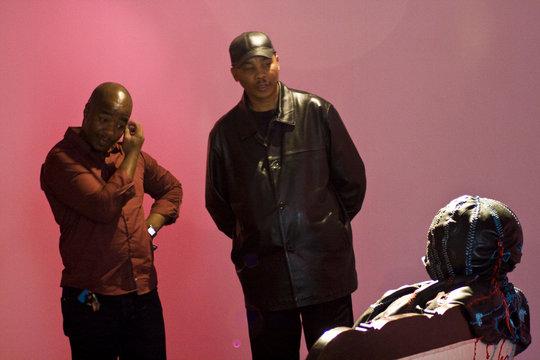 Nicholas Hlobo
Nicholas Hlobo
Portrayed in critical literature as the “post human” artist per excellence, South African artist Conrad Botes’ imagination is embedded with the evils of apartheid, and its obsession with power and repression. Botes In the wall painting Noir Christi, Botes portrays Christ’s descent from the cross that has held his tormented body. Surrounded by him are a congregation of people who have gathered to mourn his loss. Yet, in their arms lies the black coon, the radically exaggerated stereotype of the racially charged black subject. Fallen as Christ from the cross, the racialised stereotype of blackness has died a violent death and is now mourned by the very white subjects who brought it to life and cherished its survival. Recalling the missionary insertion in Africa and the quest to civilize the black “savage”, Botes reveals a society in crisis where religion is irreverent; violence is desirable, sadism institutionalized, and the individual triumphant in existential crisis15.
Entering the space of the visceral, tactile aesthetic expressions, Mary Evans’ beautiful and intricate papercut installation is formed by a blending of patterns, inspired by her personal relocation from Nigeria to the United Kingdom as well as from Chinese porcelain ornamentation. Through the juxtapositions of difference and the intermixing of cultural forms and aesthetic expressions found in her personal environment, Evans draws our attention to the multidirectional ways that influences and forms migrate. Based on a blending of adaptation, negotiation, appropriation and resistance; influences are developed as actively transformative and reciprocal. In acknowledging the porous and incomplete nature of boundaries that have fostered mutually constitutive confrontations between people across the world, Evans engages with notions of memory, desire, alienation and belonging. The labyrinth construction that forms part of Evans work and give structure to her paper cutouts, reminds me of the searching ways we navigate our everyday lives through a multitude of information and social and cultural codes. In the winding corridors of the labyrinth the visitors are restricted by space yet embraced by the experience of patterns, inspired by an aesthetic of localized differences as well as of references which are global in reach. On another level, the amalgamation of form; craft and fine art, decoration and ornamentation operate a make shift in perception as historically, craft, especially in colonial Africa, was seen as the berated form of Fine Art. Fascinated by the intricate beauty and narrative power of patterns, Evans crafts works of art to re-contextualize the images of everyday experience and shed light on the imperial roots of our modern society.
In the multimedia installation Porcelana de China/My Mother told me I Am Chinese, Cuban-African, artist María Magdalena Compos Pons in collaboration with Neil Leonard investigate the historical intersection between African, Chinese and European culture in the Caribbean. Upon the abolition of the slave trade in Cuba, large populations of Chinese people were incorporated into the Cuban work force and integrated into their new home through a process of creolization. Today in the light of China’s accelerating involvement in Africa, a new form of dynamic has developed that stands in radical contrast with the early Chinese insertion in the Caribbean. Taking these complex transactions and juxtapositions as entry points, Compos Pons investigates not only her own family heritage – as a girl she was told her family had a Chinese linage – but the complex and dynamic ways cultures and histories travel and mutate in the age of globalization. Although the histories are full of complexity, Compos Pons does not fear to give space for desire and imagination, through a blending of memories, oral narratives, historical traces, myths and symbols. In Benin artist Georges Adeagbo’s installation, the city becomes the archive and Adéagbo the archaeologist excavating the human traces of everyday life. The fusion of cultural and political media representations of the Chinese insertion in Africa in general and Benin in particular, intermixed with objects found in his hometown Cotonou in Benin; in flea markets, second hand bookshops, in the streets and antique shops, can be seen as an autobiographic mind map of the process of cultural translation. The installation forms a symphony of differences – an archive of intercultural and intertextual references that set each element in movement and just as “translation” itself never manages to seize any singular element to one dominant interpretation. The elements drawn from their original contexts; mark a fusion that configures the elements in ways that they can never again be reversed to their original meanings – no longer “authentic”, they have been irreversibly translated. Here the process of translation is revealed as never being one of a simple crossing of meaning, from one place to the other, but as the ongoing production of difference, a state of being and becoming.
Adeagbo’s project is foremost one of showing modes of “being-in-the-world” – of living in the world amongst others. “Art, as a whole, is a way of talking, a way of doing, a way of walking, a way of living amongst people.”16 Here he creates an intervening space of translation that takes advantage of the strategy of dislocation, transformation and rebirth, opening up for Walter Benjamin’s ethical and aesthetic notion of “the renewal of life”. Like Benjamin, Adéagbo is the inspired flâneur who inhabits the cosmopolitan cities he visits through the discovery of old books and objects “Memories of the cities in which I found so many things: Riga, Naples, Munich, Danzig, Moscow, Florence, Basel, Paris… memories of the rooms where these books had been housed…”17 Only to, just as Benjamin, reveal to us the profound wisdom that for a collector “the acquisition of an old book is its rebirth.”18 Historical memory and contemporary history is for Adéagbo a material medium to be cut and edited, restored and reframed in order to make visible the discursive operations of representation. Here, Adéagbo is the recollector and the translator – the bearer of a set of relations. In this process Adéagbo leaves an autobiographical footprint throughout the multiple narratives in the installation – for the process of reimagining and making sense of the histories that have shaped his continent is also a process of making sense of himself as an individual.
Shared between the artists is a quest to revise, subvert and challenge the confines of ready-made politics and bring preconceived ideas about cultural homogeneity to ruin. In not only revealing the idiosyncrasies of the artists personal approaches and their relationship to the shifting localities from where they speak, but in giving expression to the ways each individual carry the plurality of identities and existence within them, the singular plural being the French philosopher Jean Luc Nancy has told us about, is no longer utopia, but reality. In bringing the artists into dialogue with each other and with the very multitude of artists presented at the 3rd Guangzhou Triennial, a space is opened for meaning to travel in ways that keep political possibility in motion for a more synchronised future to come.
I would like to extend my thanks to my colleagues and dear friends Vuyile Voyiya, Thembinkosi Goniwe and Bhaskar Mukhopadhyay for their valuable input into the writing of this article at its various stages. Throughout the research process I have also had the helpful support of my fellow curators in the field; Sharlene Khan, Kwezi Gule and Barbara Murray who have shared with me their contacts and insights, for which I am very grateful. Last but not least I would like to thank the artists and the curatorial team of the 3rd Guangzhou Triennial; Sarat Maharj, Gao Shiming and Chag Tsong‐zung who invited me to partake in this exciting process.
Terceira Metade (Third Half) is the first edition of a project from the Rio de Janeiro Museum of Modern Art (MAM) dedicated to think about the Atlantic Ocean space, specially about the Brazil/Africa/Europe triangulation.
Curators: Marta Mestre and Luiz Camillo Osorio
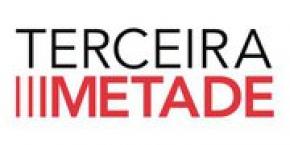
- 1. Okwui Enwezor, “Travel Notes: Living, Working and Travelling in a Restless World”, Trade Routs: History and Geography, 2nd Johannesburg Biennial, 1997
- 2. Walter Benjamin, Illuminations, p. 248
- 3. Okwui Enwezor, ‘The Production of Social Space as Artwork’, A Fiction of Authenticity: Contemporary Africa Abroad, 2003, pp. 58
- 4. Anthony Downey, ‘Curating Africa, ‘Arica Remix’ and the Categorical Dilemma’, Wasafiri, Issue 46, 2005, p. 48
- 5. Gerardo Mosquera, ‘From’, Documenta 11_3: Créolité and Creolization, 2001, p. 146
- 6. Anthony Downey, ‘Belatedness All Over Again, The African Pavilion at the 52nd Venice Biennial’, Third Text, Vol.21, Issue 6, November, 2007, p. 782
- 7. Irit Rogoff, ‘Smuggling’ – An Embodied Criticality, 2006
- 8. Donna Haraway, ‘The Promise of Monsters: A Regenerative Politics for Inappropriate/d Others’, Cultural Studies (eds) Lawrence Grossberg, 1992
- 9. Achille Mbembe, ‘Figures of the Subject in Times of Crisis’, Documenta II, Platform 4, Under Siege: Four African Cities, Cornelia Klinger ‘The Subject of Politics – The Politics of the Subject’, Documenta II, Platform 1,Democracy Unrealized, Okwui Enwezor ‘The Production of Social Space as Artworks’, A Fiction of Authenticity: Contemporary African Abroad, to mention a few.
- 10. Achille Mbembe and Sarah Nuttall, ‘Writing the World from an African Metropolis’, Public Culture 16, 2004, p. 348
- 11. Proposal notes, Thembinkosi Goniwe
- 12. Edward Said, Orientalism, 1979, p. 18
- 13. Jan Erik Lundstrom, Barthélémy Toguo: The Sick Opera, Paris Musées: Palais de Tokyo, 2004
- 14. The ‘trickster’ as artistic intervention is developed by Jean Fisher in the article ‘Towards a Metaethics of Shit’, Complex Entanglements, (edt) Nikos Papastergiadis, 2003
- 15. Conrad Botes, ArtPrint SA
- 16. Edt. Silvia Eiblamayr, Georges Adéagbo: Archaeology of Motivations, Re writing History, 2001, p.65
- 17. Walter Benjamin, ‘Unpacking My Library’, Illuminations, p.68
- 18. Ibid, p.63